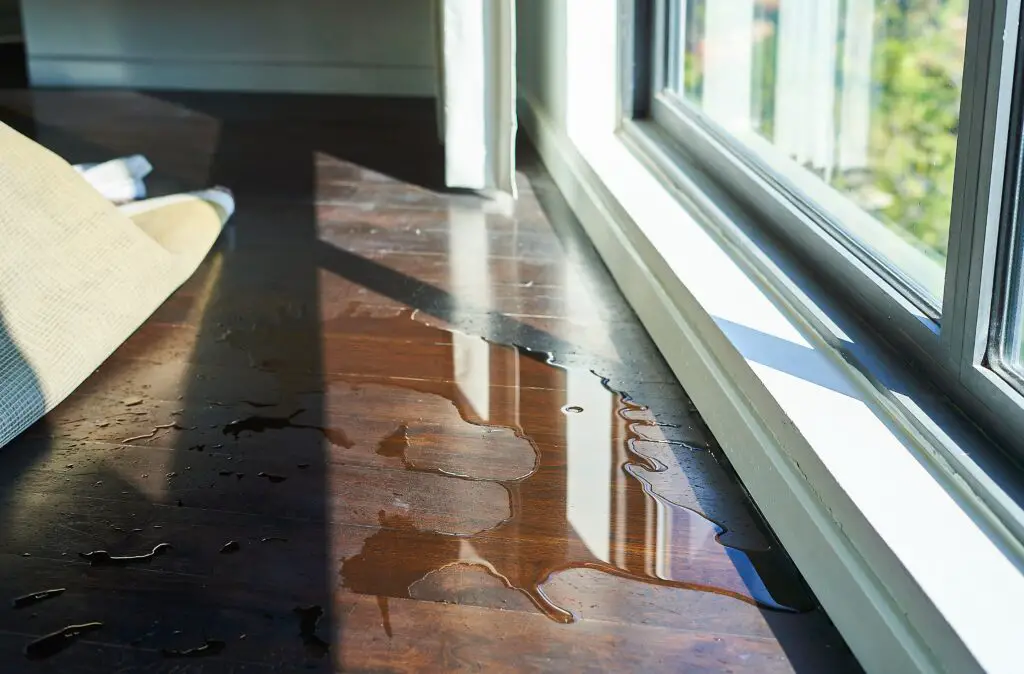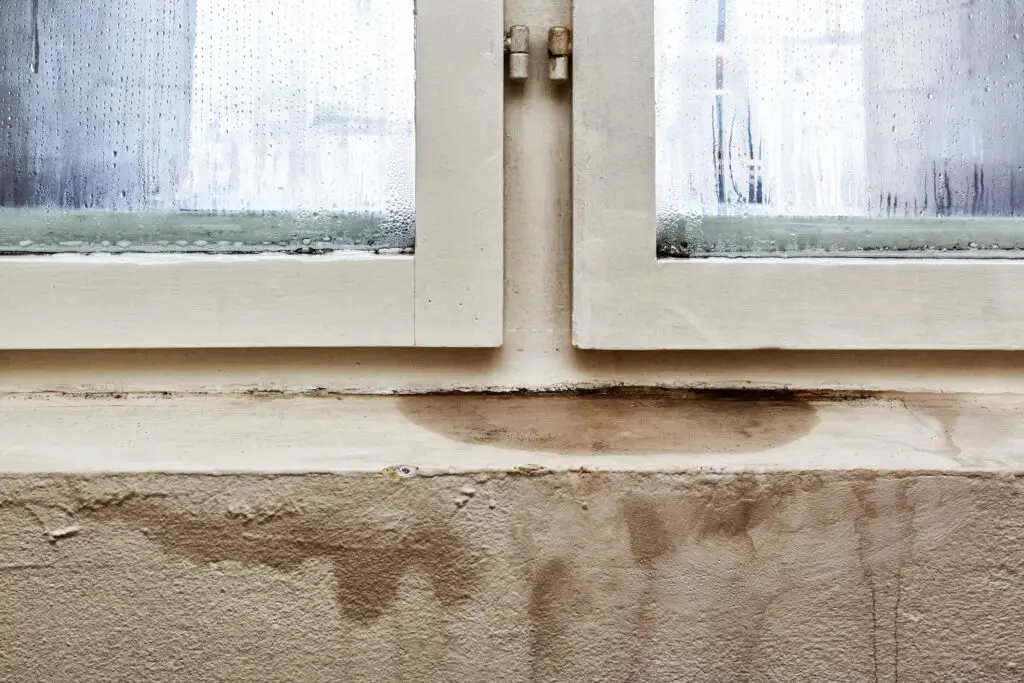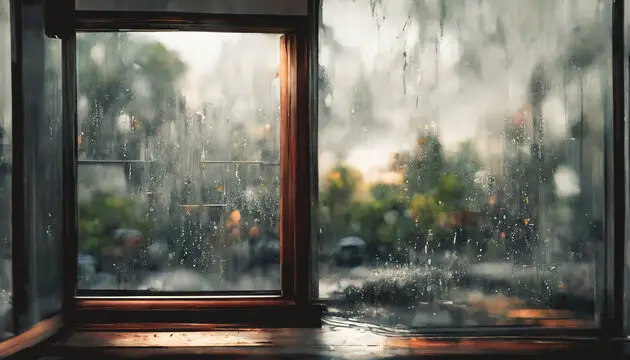When the rain comes down, the last thing you want is to be dealing with a sliding window that leaks. This unfortunately common issue can cause significant water damage to your home’s interior.
Not only does it pose a threat to your furnishings and structural integrity, but it also raises concerns about mold and mildew growth. In the following sections, we’ll explore the reasons behind your sliding window leaks when it rains and present effective solutions to this vexing problem.
It’s a familiar and frustrating scene: dark clouds gather, the pitter-patter of rain begins, and suddenly, you’re dealing with a leaking sliding window.
This issue isn’t just an inconvenience; it’s a potential hazard that could lead to extensive water damage and the onset of harmful molds. Understanding why your sliding window leaks when it rains is the first step to resolving this problem, and preventing it from dampening your day.
In the upcoming sections, we’ll delve into the common causes of this issue and provide practical solutions to keep your home dry and safe.
Causes of Window Leaks

Age and wear
One common cause of sliding window leaks, when it rains, is simple age and wear. Over time, the seals around your window can degrade and lose their effectiveness, allowing water to seep in when it rains.
The materials used in the construction of the window could also have deteriorated. This could relate to the window frame, the glass pane itself, or even the wall surrounding the window. Regular inspections and timely repair or replacement of worn-out components can prevent leaks due to age and wear.
Faulty Installation
Faulty window installation is another frequent cause of sliding window leaks when it rains. A window that has not been properly installed can leave gaps and spaces through which water can infiltrate.
This can occur if the window is not correctly aligned within the frame, or if the sealing and waterproofing measures were not sufficiently executed during installation. In addition, the use of substandard or incorrect materials during installation can further contribute to the problem.
It is crucial to engage professional window installers who have the requisite knowledge and experience to ensure correct and secure installation.
If you suspect faulty installation is the cause of your window leak, a complete evaluation by a professional may be necessary to rectify the issue and prevent future leaks.
Damaged Seals
Damaged or deteriorated seals are a common reason for sliding window leaks when it rains. Seals are essential elements that maintain the watertight integrity of a window.
They are typically made of flexible materials such as rubber or silicone, which can withstand the elements but are also prone to wear and tear over time.
Exposure to harsh weather, extreme temperatures, and even regular use can cause these seals to crack, shrink, or disintegrate, leading to inefficiencies in their protective function. When the seals are damaged, water can easily penetrate through these weaknesses, resulting in leaks.
Regular inspection of window seals, especially after extreme weather conditions, can help identify potential issues early.
Poor Design
Poor design is yet another significant contributor to sliding window leaks when it rains. The layout and structure of a window are crucial, and any design flaws can lead to potential water infiltration.
For instance, windows that lack a proper water drainage system in their construction can trap water, leading to eventual leakage. Similarly, windows with insufficient slope on the sill may collect water, which can then seep inside.
Furthermore, if the window design does not account for appropriate expansion and contraction due to varying weather conditions, it can create gaps, rendering the window susceptible to leakage.
It is, therefore, imperative to choose windows with a robust and well-considered design, which includes effective waterproofing features, to prevent moisture seepage and subsequent damage.
Implications of Window Leaks

Water Damage to Interior
Water leakage through windows can lead to significant damage to the interior of a home, compromising its aesthetic appeal and structural integrity. When water seeps in, it can stain walls, warp wooden frames, and ruin insulation.
Over time, unchecked water infiltration can even cause severe damage to the home’s foundation. Prolonged exposure to moisture can degrade different materials, resulting in costly repairs and replacements.
It is therefore crucial to address sliding window leaks promptly to protect the interior elements of your home from water damage.
Mold Growth
The presence of moisture creates an ideal environment for mold growth, posing a serious health risk to inhabitants. Mold not only ruins the visual appeal of a home but also produces allergens and irritants, leading to potential health issues like respiratory problems and allergic reactions.
Moreover, mold penetrates surfaces and can lead to structural damage if left unchecked. Mitigating window leaks when it rains is a proactive approach to prevent the conditions that allow mold growth, safeguarding both the health of occupants and the integrity of the home.
Increased Energy Costs
Sliding window leaks can contribute to substantial energy waste, leading to increased utility bills. Water leaks can compromise the insulation of a home, forcing heating and cooling systems to work harder to maintain desired indoor temperatures.
Furthermore, leaks allow for the easy passage of air, resulting in drafts during colder months and loss of cool air during summer.
Efficient window sealing and addressing leaks promptly can significantly improve the energy efficiency of your home, reducing carbon footprint and saving on energy costs.
Solutions and Fixes for Window Leaks

Seal Repair or Replacement
When seals fail, they often cause window leaks during rain. Therefore, window seal repair or replacement becomes essential to maintain the energy efficiency and structural integrity of your home.
Seal Repair
Seal repair is typically a suitable solution for smaller leaks or cracks in the window seal. This process involves applying a sealant – a waterproof material that fills the gaps and prevents further seepage of water.
The sealant hardens upon drying, strengthening the seal and restoring its waterproof qualities. It’s a cost-effective solution that can often be carried out as a DIY task. However, it’s recommended to seek professional help for severe or complex leaks.
Seal Replacement
If the seal is extensively damaged or old, it may be more efficient to replace the entire seal. Seal replacement involves removing the old seal from the window frame, cleaning the area thoroughly to eliminate any residual sealant or debris, and then installing a new seal.
This process requires precision to ensure a perfect fit, preventing any future leaks.
It’s recommended to hire a professional for this task, as incorrect installation could lead to continued leaks and possible damage to the window frame.
Both seal repair and seal replacement are effective solutions for dealing with window leaks. The choice between the two would depend on the extent of the damage, budget considerations, and the specific conditions of your home.
Window Realignment
In some cases, a misaligned window might be the cause of leaks when it rains. When windows are not correctly aligned within their frames, gaps can appear that allow water to seep in. Correcting this requires a process known as window realignment.
Process of Window Realignment
Window realignment is a precise process that involves adjusting the window sashes so they are perfectly level, plumb, and square within the frame. Initially, it requires loosening the window mounting screws slightly.
Then, using a level, the window sashes are adjusted until they’re perfectly horizontal and vertical. Once the sashes are correctly positioned, the screws are tightened again to secure the window in its place.
Depending on the window type, additional steps may be necessary, such as adjusting the rollers or tracks for sliding windows.
Benefits of Window Realignment
Realigning a window can not only fix leaks but also improve the window’s overall performance and lifespan. It ensures proper closure and efficient operation, reduces wear and tear on the window’s components and improves energy efficiency by eliminating drafts.
Moreover, it enhances the window’s appearance by ensuring it sits properly within the frame.
Professional Assistance
Though DIY enthusiasts may attempt window realignment, it’s a complex task that demands precision and expertise.
Misalignment could lead to worsening issues, including persistent leaks, drafts, and even damage to the window or frame. Hence, it’s advisable to hire professionals for this task.
They have the necessary skills and tools to ensure the job is done correctly, mitigating any potential for future window leaks when it rains.
Professional Inspections and Repairs
Professional inspections and repairs play a crucial role in maintaining the integrity and functionality of the windows, especially when dealing with sliding window leaks when it rains. Inspections involve a thorough examination of the window’s entire system, including the frame, glass panes, seals, and other hardware.
Professionals use advanced tools to detect any deformities or issues that may be causing the leaks.
During inspections, professionals look for signs of wear and tear, damage to the sealant, gaps or cracks in the frame, and problems with the alignment of the window.
They also check the condition of the weatherstripping, as deteriorating weatherstripping can create tiny spaces that allow water to seep in.
If an issue is detected during the inspection, professionals can also carry out necessary repairs. This could involve replacing damaged or worn-out components, resealing the window, or performing a window realignment.
In some cases, if the window is significantly damaged or outdated, they may recommend a full window replacement.
Professional repairs are carried out with precision and expertise, ensuring the issue is resolved effectively and efficiently. They also follow safety regulations and industry standards, further guaranteeing the quality of the repair work.
Once the repairs are completed, the professionals will reinspect the window to confirm that the leaks have been resolved, providing homeowners with peace of mind that their window will no longer leak when it rains.
Related Topics:
Preventive Measures
Regular Inspections
Regular inspections play a pivotal role in maintaining the performance and longevity of sliding windows. Such inspections involve meticulous evaluation of every facet of the window, including the frame, glass, seals, and other hardware.
In the case of sliding window leaks, a professional inspector will meticulously check for any deformities, wear and tear, or alignment issues that could be causing water infiltration. Additionally, the condition of the weatherstripping is assessed, as its degradation can create minuscule spaces allowing water to seep in.
Proper Installation
The quality of the window installation can significantly impact the efficiency of the sliding window and prevent leaks when it rains. Proper installation entails precise alignment of the window within the frame, ensuring optimal fit and sealing.
Any misalignment can create gaps through which rainwater can infiltrate.
Thus, it’s crucial to entrust the installation task to experienced professionals who have the requisite knowledge and tools to ensure a watertight installation.
Use of Appropriate Materials
The choice of materials used for the sliding windows can be a determining factor in preventing leaks during rainfall. High-grade materials are inherently more resistant to warping, peeling, and cracking, which often lead to leaks.
Additionally, the type of sealant used is of equal importance; a high-quality sealant forms a robust barrier against the elements, thereby preventing water seepage.
It is always advisable to opt for top-notch materials that can withstand the test of time and weather, ensuring the longevity and efficiency of the sliding windows.
Conclusion
In conclusion, addressing sliding window leaks when it rains is critical for maintaining the integrity and comfort of your home. The issue often stems from factors such as age-related wear and tear, faulty installation, deteriorated seals, and poor window design.
These problems can lead to severe interior water damage, mold growth, and increased energy costs. However, solutions abound, including seal repair or replacement, window realignment, and professional inspections and repairs.
Lastly, preventive measures, including regular inspections, proper installation, and the use of high-grade materials, can significantly mitigate the risk of leaks.
Remember, the quality of your sliding window and its installation directly influences its performance during rainfall, so always opt for professional service and top-notch materials.
FAQs
What should I do if my sliding window leaks when it rains?
First, you should try to identify the source of the leak. This could be due to deteriorated seals, faulty installation, or a poor window design. Once identified, solutions might include seal repair or replacement, window realignment, or professional inspections and repairs. Remember to use high-quality materials for any repairs or replacements to ensure longevity and prevent further issues.
How can I prevent my sliding windows from leaking during rainfall?
Regular inspections of your windows can help detect any potential issues before they become serious problems. Good preventive measures include ensuring proper installation of the window, choosing high-grade materials that can withstand the wear and tear of weather, and using a high-quality sealant. Lastly, always choose professional service to ensure that the work is done correctly and efficiently.

Wow! This can be one particular of the most useful blogs We have ever arrive across on this subject. Basically Excellent. I am also a specialist in this topic therefore I can understand your hard work.